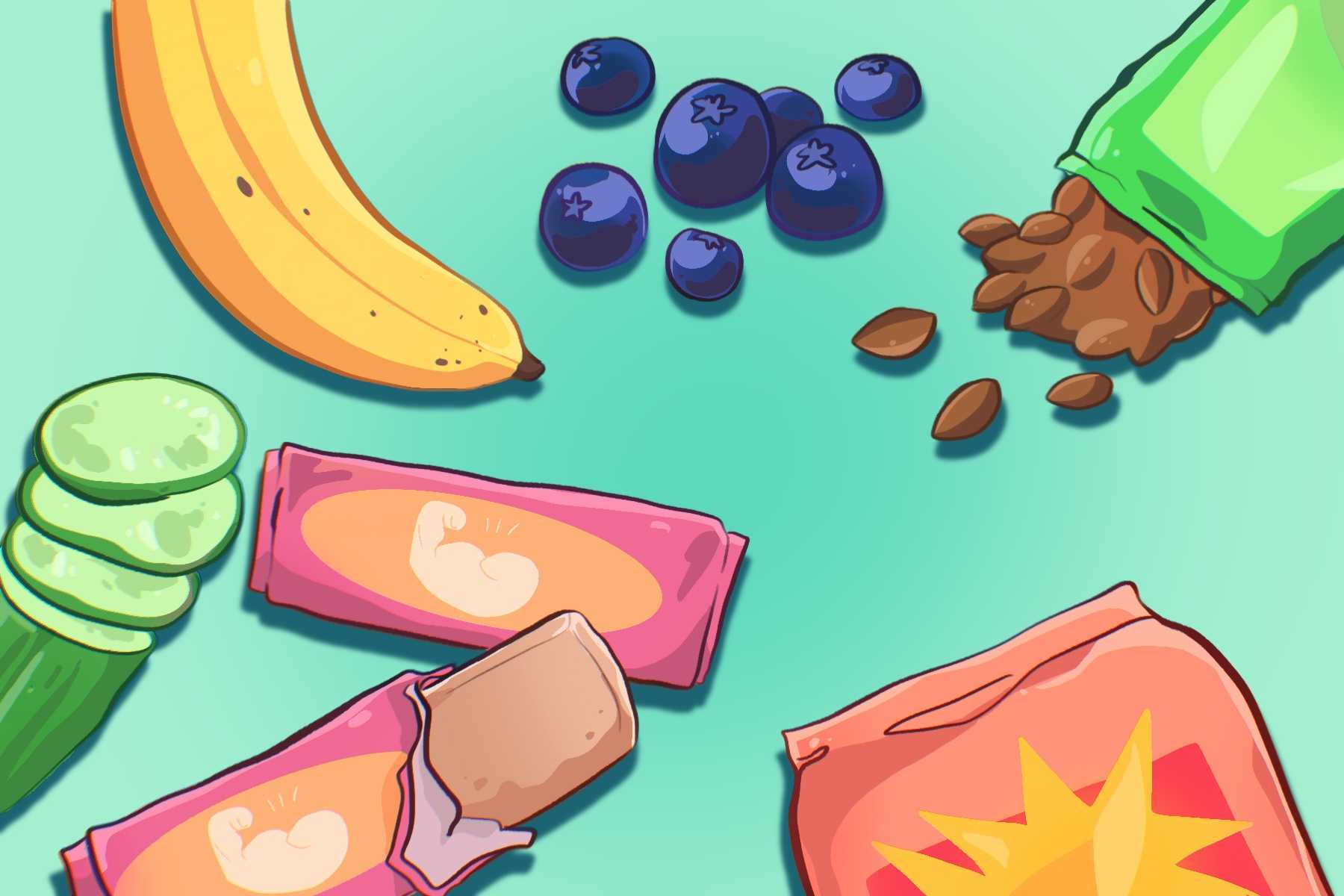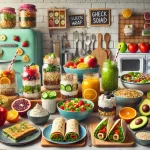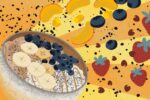Snacks fill up a significant chunk of space on grocery store shelves, which should come as no surprise since many people consider them to be an important part of their daily diet. While not as filling as a full meal, healthy snacks provide important nutrients and offer a quick way to stave off hunger during busy days. However, the marketing for these foods rarely delivers the whole truth about their product, as many that claim to be “nutritional” or “sugar-free” hide their most harmful aspects. Even treats that are known to be unhealthy contain dangerous ingredients associated with severe health risks that are far worse than most consumers imagine. This deceptive marketing creates unnecessary difficulties for those who want to buy truly healthy snacks. Fortunately, recent studies and research into the nutritional value of popular snacks provide a transparent perspective into the food we eat.
Hidden Dangers in Junk Food
There’s a wide variety of reasons to avoid junk food. Many popular treats like Twinkies and Oreos contain unhealthy amounts of calories and sugars, which can incite unwanted weight gain, increased blood pressure and heart disease. Another dangerous ingredient common in many processed foods is high-fructose corn syrup. Like sugar, high-fructose corn syrup contributes to obesity but proves far more dangerous by forcing the body to develop insulin resistance. Without insulin, the body struggles to process glucose, consequentially damaging the liver and increasing the chances of type 2 diabetes. This alone should be enough reason to stop eating junk food, yet it only scratches the surface of the dangers present in many unhealthy snacks.
One of the most harmful ingredients present in snack foods is a preservative chemical known as tertiary butylhydroquinone (TBHQ). A 2021 study conducted by the Environmental Working Group (EWG) found that TBHQ weakens the immune system by lowering the activity of cell surface receptors and inhibiting the release of the chemicals involved in maintaining white blood cells. Prior research supports this connection between the preservative and damage to the immune system, with two 2018 papers describing how TBHQ interferes with the activation of NK cells and anti-cancer probiotics. Alongside the EWG’s initial study, the organization released an extensive list of products that contain TBHQ, including food items from Kellogg’s, Ghirardelli and Little Debbie.
To prevent the symptoms of the preservative, the U.S. Food and Drug Administration (FDA) only allows for .02% of the oils in food products to consist of TBHQ. The chemical’s health detriments only appear when consumed in high doses over a short period, meaning this limit would presumably prevent any adverse effects. Unfortunately, most people consume junk food in portions that are much larger than the recommended serving size. This isn’t entirely due to a lack of self-moderation, as a few aspects of the foods themselves contribute to overeating.
The small size of most unhealthy snacks creates the impression that eating only a few pieces won’t be harmful, encouraging consumers to eat much more than the small serving portions. For example, the official recommended serving size for Lay’s potato chips is 1 ounce, but the traditional chip bags contain roughly 10 ounces. The tendency to overeat results in a large intake of harmful ingredients, only worsening the negative consequences of consuming junk food.
Similarly, an article by the Washington Post cited multiple studies claiming that many of these unhealthy snacks have a high glycemic index, meaning that they raise the body’s blood glucose and motivate the brain to find similarly sugary foods. As a result, the packaging and sugary content of these unhealthy snacks push consumers to ingest immense amounts of sugar, TBHQ and processed ingredients.
Nutrition with a Catch
This caution toward ingredients isn’t solely meant for junk food, as some supposedly healthy snacks contain similarly significant drawbacks. On the surface, granola bars seem like one of the most nutritious snacks you can possibly have. An article by Healthline claims that most granola bars provide proteins, fiber and micronutrients like calcium, iron and magnesium. Furthermore, fruits and nuts add additional nutrients and flavor to the snack, making it all the more enticing.
However, not every granola bar is nutritious, as many popular examples like Nature Valley and CLIF bars — the latter of which recently lost its “nutritious” label — contain numerous processed ingredients and an abundance of added sugar (including high-fructose corn syrup). The unnecessary additives make some of these granola bars almost as unhealthy as candy. Fortunately, this doesn’t apply to every type of granola bar: An article by FULLforLife found that RXBar and Lärabar use mostly natural ingredients, making them genuinely healthy snacks. Because of odd examples like these, consumers need to learn about the ingredients in their food.
Some snacks are low in both nutrients and harmful ingredients, making it somewhat difficult to determine whether they should be considered “healthy snacks.” Bland foods like pretzels and saltine crackers carry hardly any fat or calories, making them safe to eat in moderate portions. However, the large amounts of carbs in pretzels and sodium in saltines will increase the chances of suffering from heart disease if these snacks are eaten in overly large quantities. As such, these foods can be safely eaten in moderation, but should not become a regular staple of your diet.
One other food that’s raised many questions about its nutritional value is dark chocolate. In contrast to the sugary reputation of other candies, multiple studies tout dark chocolate as a genuinely healthy snack with surprising benefits, ranging from assisting with weight loss to preventing cancer. These claims were supported by hundreds of professionally conducted studies, so there seemed to be little reason to doubt its status as a potential superfood. However, a 2018 Vox article by Julia Belluz shined a spotlight on the shady practice of major chocolate manufacturers funding studies on the health effects of their products. By solely funding studies that presented chocolate in a positive light, these companies drastically skewed nutritional research toward a biased perspective that failed to consider the detriments of chocolate. As a result, dark chocolate and other cocoa products saw a massive boost in sales alongside countless erroneous claims spread by news media.
This doesn’t necessarily mean that every claim regarding the benefits of dark chocolate is false. More recent, independent studies discuss evidence of dark chocolate containing plant chemicals called flavanols, which aid blood flow and lower blood pressure by helping the body produce nitric oxide. Furthermore, a 2019 research overview noted that dark chocolate is highly nutritious with plenty of fiber, antioxidants and minerals. Despite these benefits, dark chocolate is much like other forms of chocolate in that it carries plenty of calories and saturated fats. For these reasons, it may be beneficial to eat dark chocolate on occasion, but it’s ultimately another snack that shouldn’t be eaten in large portions.
Recommended Healthy Snacks
It’s clear that most snacks contain some form of hidden drawback or are outright deceptive about their nutritional value. Fortunately, there are a few healthy snacks that are worth incorporating into your diet. Fruits are one of the most obvious examples because they provide a significant amount of fiber, antioxidants and nutrients. They contain different quantities and types of vitamins and minerals, so having a varied palate will cover a wide range of important nutrients. Additionally, the natural sugars found in fruits lack the negative health effects of processed sugars due to their low glycemic index. People with diabetes should eat fruits in moderation, especially ones with more sugar than fiber, such as figs and grapes. However, the American Diabetes Association actively encourages low-sugar options like avocados and lemons. Because of this, fruits are a perfectly healthy snack when consumed by themselves or in simple homemade recipes like fruit salads and smoothies.
Dried fruits deliver many of the same benefits as regular fruits, albeit with a few caveats. Despite their smaller size, they contain the same amount of sugar and calories, meaning they should be consumed in small portions. Furthermore, many companies alter dried fruits by adding processed sugar and a preservative known as sulfur dioxide. This preservative is harmless to most people but may trigger asthma attacks or allergic reactions in a small percentage of people. Additionally, a 2017 study on dried prunes found a potentially carcinogenic chemical called acrylamide, which originates from high-temperature heating processes. Dried fruits aren’t inherently bad, but these factors should incentivize consumers to look for ones made without these harmful ingredients.
For those looking for similar healthy snacks that are available in small portions, both nuts and homemade popcorn provide a surprising number of nutritional benefits without significant drawbacks. As with fruits, different types of nuts contain distinct vitamins and minerals that contribute to the prevention of cardiovascular diseases, cancer and Alzheimer’s. An article by The Daily Meal describes the health benefits of the most common varieties, with almonds and walnuts being considered two of the most nutritious types due to their abundance of minerals and antioxidants.
On the other hand, popcorn isn’t often associated with healthy snacks, but that’s because most people have only eaten it with heavy amounts of salt and butter. Whether it’s from a movie theater or a microwave, most popcorn includes artificial flavoring and heavily processed ingredients that nullify any of its potential health benefits. However, cooking popcorn kernels at home helps to avoid these issues, creating a light yet filling snack that is full of fiber and helpful antioxidants called phenolic acids.
Finally, one of the healthiest snacks you can have is yogurt. In addition to an abundance of proteins, vitamins and minerals, yogurt also contains a wide variety of probiotics that improve gut health and strengthen the immune system. Furthermore, multiple studies have found that yogurt improves the ability of those with lactose intolerance to digest dairy products due to its low-lactose content. However, those with severe lactose intolerance or anybody on a diet that forbids dairy products can turn to the many plant-based alternatives (though these provide fewer nutrients than their dairy-based counterparts). As with any other food, highly-processed and additive-laden yogurts are common on store shelves and should be avoided, but those that use organic ingredients are incredibly healthy snacks that you should add to your diet.

















